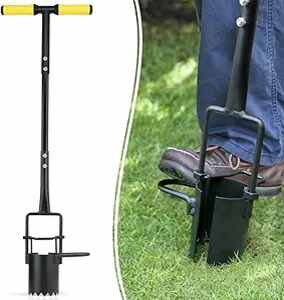Seasonal Gardening Tips: What to Plant and When for Ideal Results
The Comprehensive Overview to Horticulture: Discover the Advantages of Different Styles and Strategies
Horticulture includes a varied range of styles and strategies, each offering one-of-a-kind benefits tailored to individual preferences and ecological contexts. As we explore these various styles, it ends up being evident that the choices made can considerably affect both the garden's health and its payment to the surrounding atmosphere.
Recognizing Gardening Essentials
Understanding the basics of horticulture is necessary for growing a thriving and sustainable garden. An effective gardening undertaking starts with a strong structure of knowledge pertaining to soil, plant choice, and climate factors to consider.
Selecting the right plants is just as essential. Recognizing their specific demands-- such as sunshine, water, and spacing-- makes sure compatibility with the neighborhood climate and dirt conditions. This selection procedure need to likewise take into consideration the growth behaviors and lifecycle of plants, permitting for a balanced and visually pleasing yard.
Furthermore, efficient sprinkling methods are crucial. Over-watering and under-watering can both lead to plant stress and disease. Applying a timetable based upon seasonal modifications and plant requirements can enhance water effectiveness.
Popular Gardening Styles
What specifies the essence of preferred gardening styles? These styles encapsulate varied visual principles, functional requirements, and environmental factors to consider, eventually mirroring the garden enthusiast's individual vision. Among one of the most popular designs is the home garden, identified by its informal format and a vivid range of blossoms and vegetables. This approach emphasizes an unified mix of color and appearance, producing a welcoming atmosphere.
Conversely, the formal yard embodies balance and order, frequently including geometric patterns and diligently trimmed bushes. This design interacts elegance and sophistication, with carefully selected plants that reinforce an organized visual.
The Japanese garden offers a serene and meditative experience, using all-natural elements like water, stones, and plants to develop a peaceful environment. It concentrates on simpleness and equilibrium, motivating reflection.
Additionally, xeriscaping has actually gotten popularity, particularly in dry regions (Gardening). It focuses on drought-resistant plants and effective water usage, promoting sustainability while boosting landscape elegance
Advantages of Container Gardening
Container horticulture offers a wide variety of advantages that make it an attractive alternative for both beginner and experienced garden enthusiasts alike. Among the primary advantages is adaptability; containers can be put in numerous places, permitting gardeners to maximize sunlight direct exposure and develop visually attractive plans. This versatility makes it possible to yard in spaces where traditional in-ground horticulture might not be possible, such as balconies, outdoor patios, or city environments.
Additionally, container gardening provides much better control over dirt conditions. Gardeners can tailor the soil mix to match particular plants, guaranteeing ideal drain and nutrient schedule. This is particularly beneficial for individuals staying in locations with poor or infected soil.
An additional considerable benefit is the decreased danger of insects and conditions. Container plants can be checked much more conveniently, and any kind of issues can be addressed quickly. home This method can decrease the spread of intrusive varieties.
Sustainable Horticulture Practices
Sustainable horticulture techniques are crucial for promoting ecological health and wellness and boosting biodiversity in our environments. These methods prioritize ecological balance, source preservation, and making use of natural approaches to reduce adverse environmental influences. By using techniques such as composting, garden enthusiasts can minimize waste while enhancing dirt health, thus cultivating a flourishing yard community.
Water preservation is one more important facet of sustainable gardening. Techniques such as rainwater harvesting, drip watering, and using drought-resistant plants can dramatically decrease water use while making certain that plants get appropriate wetness. Moreover, integrating native plant species into yard designs sustains local wild animals and reduces the need for chemical fertilizers and chemicals, which can be hazardous to the atmosphere.

Ultimately, sustainable horticulture practices not just contribute to much healthier yards yet also advertise an even more resilient use this link environment, providing long-term advantages to both the gardener and the surrounding community.
Tips for Effective Gardening
To cultivate a thriving garden, garden enthusiasts need to focus on careful planning and thoughtful execution of their gardening methods. Begin by analyzing the neighborhood environment and soil conditions, as these aspects significantly influence plant option and development. Pick plants that are well-suited to your atmosphere, thinking about native types that will love very little intervention.
Carrying out a well-structured format is crucial (Gardening). Utilize companion growing strategies to advertise biodiversity and all-natural pest control, while guaranteeing each plant has sufficient space for growth. This not only improves appearances yet additionally boosts general plant wellness
Routine maintenance is vital to an effective yard. Establish a consistent routine for watering, weeding, and feeding. Mulching can aid maintain dampness and reduce weeds, while likewise adding natural matter to the soil.
Do not ignore the value of observation. Consistently checking plant health and development will certainly enable prompt treatments. Be open to discovering and adapting; horticulture is a continuous procedure that benefits from experience and experimentation. By focusing on cautious planning, implementation, and ongoing upkeep, gardeners can achieve a vivid and efficient yard that thrives throughout the periods.
Final Thought


In summary, the expedition of varied gardening designs and strategies exposes their multifaceted benefits, adding to both visual allure and eco-friendly wellness. Container horticulture supplies adaptability and accessibility, while lasting methods enhance environmental stewardship. By integrating various methods and methods, garden enthusiasts can enhance their initiatives, advertise biodiversity, and create functional outside areas. Ultimately, this detailed overview works as an important resource for cultivating successful gardening experiences, promoting a much deeper connection with nature and the surrounding environment. his explanation